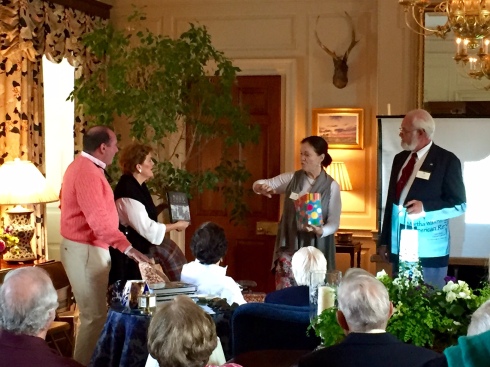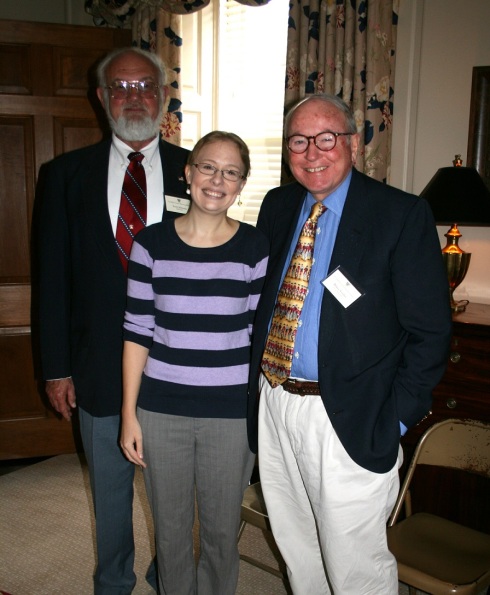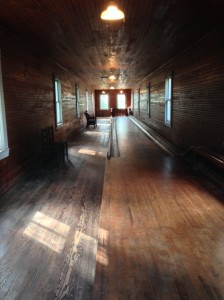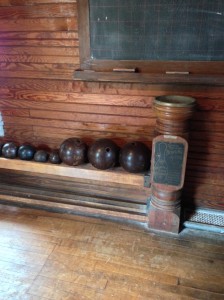Our first membership meeting of the year was held on May 15, 2016 in Manakin-Sabot. More than 60 people attended on what turned out to be a beautiful spring afternoon. A part of the reason for the excellent turn out would be the location, Sabot Hill. John and Sarah Van Der Hyde were gracious enough to open their home and the beautifully landscaped gardens to our members and guests.

Sabot Hill c. 1937
Sabot Hill, a Georgian-style mansion, was completed in 1937 by William T. Reed, Jr. The Baskerville and Son’s designed home has many handsome features such as the paneled entry and stairway and the 1719 woodwork and paneling in the library. The formal gardens are more than 100 years old and feature boxwood, roses, foxglove and a dahlia cutting garden. The current Sabot Hill occupies the same site as the 1850’s mansion of the same name that was built by James A. Seddon. Seddon’s mansion burned in the 1920’s.

Historical Society President Scott Johnson and Director Phyllis Silber present a thank you gift to hosts John and Sarah Van Der Hyde.
Lynn Price, our speaker for the day, discussed “The Lady of His Excellency’: Martha Washington during the American Revolution.” Price is Assistant Editor at the Washington papers and gave an in depth account of some of the surviving correspondence between Martha and George Washington and what became of the bulk of their letters. The lecture was followed by a lively question and answer segment that kept everyone’s attention.

L to R: President Scott Johnson, speaker Lynn Price and Vice-President Bruce Venter.
Afterwards, John Van Der Hyde presented the listeners with a brief history of Sabot Hill and then encouraged the attendees to stroll the gardens.

Fountain in the garden at Sabot Hill
This was a not-to-be-missed occasion! We would like to thank John and Sarah Van Der Hyde for opening their home and gardens for the day. Thank you as well to Lynn Price for giving us such a wonderful presentation. We would also like to than Louise Thompson and Virginia Olson for getting the refreshments on the table in time and for cleaning everything up afterwards. This was a meeting that will not be soon forgotten.

Host Sarah Van Der Hyde with Penny
Contributed by James Richmond of the Goochland County Historical Society
For more information on Sabot Hill read Volume 10.2 of The Goochland County Historical Society’s magazine.





